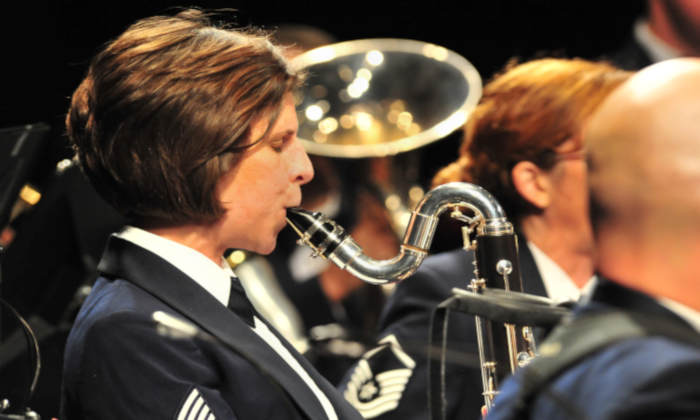
Many composers and listeners love the bass clarinet because it has a warm, resonant sound. The bass clarinet is a wind instrument and larger cousin of the B-flat clarinet, or soprano clarinet, with a range several octaves lower.
I have played bass clarinet for more than 30 years. I began playing the instrument when I was 12 years old. And I have learned a great deal about it. I have played in school ensembles including college symphonic bands. And I now play the instrument in my local community band.
Here I’ll answer 20 of the frequently asked questions many new bass clarinetists have about their instruments.
Background and history of bass clarinets
What is the range of a bass clarinet?
Bass clarinets have a broad range that spans nearly 4 octaves. Most bass clarinets begin at the E-flat below the treble clef staff and can go up to the F or G an octave above the staff.
Extended-range instruments can reach higher still, with a range starting at the C one octave below the staff. These extended-range instruments are used in newer music and in orchestral and opera scores.
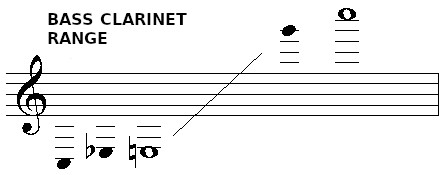
How high can a bass clarinet play?
This instrument has a surprising ability to play high notes. This is known as the altissimo, or very high, register. The altissimo register begins at the C above the staff and can go as high as the G above that.
Experienced bass clarinetists may be able to use special fingerings to achieve even higher notes. But most new players will not have a good sound in this register.
High notes can be difficult on this instrument. But anyone can learn to play them with enough practice.
What is the lowest note on a bass clarinet?
The lowest note on most bass clarinets is the E-flat below the staff. Extended range instruments, like most professional instruments, can reach the C below the staff.
Where did the bass clarinet originate?

The bass clarinet was first made in Germany in 1793. It was shaped more like a bassoon in its early history. The instrument had only nine keys when it was first made. More keys have been added over time.
Bass clarinets were made in a variety of shapes, sizes, and keys until Adolphe Sax standardized the instrument in 1836, giving the instrument its distinctive look with a curved neck and upward curved bell. Adolphe Sax later went on to invent his namesake, the saxophone.
What family does the bass clarinet belong to?
This instrument is part of the clarinet family within the broader woodwind family. It’s played by blowing over a removable reed made of cane or plastic which is attached to the mouthpiece. The reed’s vibration, amplified by the instrument’s body, is what makes the sound. Other members of the woodwind family include the flute, saxophone and bassoon.
Is bass clarinet the same as clarinet?
The bass clarinet is a larger cousin to the clarinet. The two instruments complement each other, but they’re not the same. Both instruments share similar fingerings, so it’s easy to switch back and forth between them.
But the bass clarinet’s sound is darker than that of the soprano clarinet. Even when the instruments are playing the same note, they sound different.
Is bass clarinet hard to play?

Bass clarinets are not hard to play, especially if you’ve already played the B-flat, or soprano, clarinet. This instrument is easier than the flute and bassoon and slightly harder than the saxophone.
Most of the fingerings are the same, though the bass has extra keys that can be confusing at first. Many musicians who play the saxophone also find it easy to play this instrument.
Besides a basic understanding of the fingerings, new bass clarinetists need air power and breath control. Young children often have a difficult time with the size of the instrument and producing enough breath to sustain a good sound.
Is bass clarinet harder than clarinet?
Many people believe that the bass version is easier than the soprano clarinet. The keys are larger, which means the fingers are less cramped than they would be on the soprano clarinet. The two instruments have mostly the same fingerings.
On both the bass and soprano clarinets, it is easier to produce an attractive, warm sound in the lower register. Playing in higher registers requires more training and a better embouchure—the way the lips and mouth are held while playing.
Buying a bass clarinet
How much is a bass clarinet?
Bass clarinets come in a wide variety of price ranges. Expect to pay between $500 and $2,000 for a good-quality student model. A mid-level instrument runs up to $5,000.
At the higher end of the price range, a professional, extended-range instrument (that goes down to the written C below the staff) can be priced as high as $11,000.
What brand of bass clarinet is best for beginners?
There are several good-quality brands of beginner bass clarinets. Some brands that make the best student models include:
- Yamaha
- Selmer
- Buffet Crampon
As with most instruments, it’s best to avoid paying a rock-bottom price. You’ll typically find that you get what you pay for.
Is a wood or plastic clarinet better?
The best bass clarinets are made of grenadilla wood, which gives the instrument a pleasing, warm, resonant sound. But wood and plastic resin clarinets each have their advantages (related: Parts of a Clarinet Explained).
Plastic clarinets are the best choice for a new player because taking care of a wood clarinet can be difficult. Wood clarinets need to be kept at a consistent temperature and humidity, and the wood itself can be fragile if dropped. Plastic clarinets are hardier and are generally a better choice for young players.
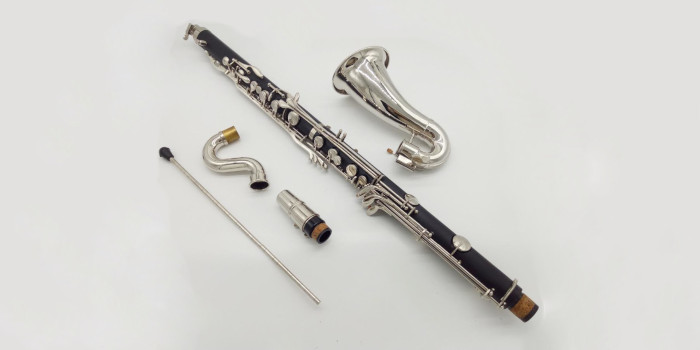
What is the best bass clarinet?
As with most instruments, experienced players are divided on which instrument is best. The two main contenders are the Buffet Crampon Prestige Low C model and the Yamaha YCL-622II Low C model.
I own a Buffet Crampon Prestige model and it has given me over ten years of outstanding tone and performance. But the quality of the Yamaha model is just as high. And each model has its dedicated fans.
What is the best bass clarinet mouthpiece?
There are a wide variety of mouthpieces available. Most bass clarinets will come with a good-quality mouthpiece, so most players will not need to change this. But mouthpieces differ in their interior shape, so some people may get better results by changing their mouthpiece.
A few popular brands that make great mouthpieces within the price range of $100 to $400 are:
- Vandoren
- Yamaha
- Theo Wanne
- J&D Hite
Most music stores allow people to come in and play-test mouthpieces, which helps you choose the best sound for your individual needs.
Just because a mouthpiece costs more doesn’t mean it’s a better choice for you. You may find a $100 mouthpiece gives you a better sound than a $400 mouthpiece.
What is the best reed for a clarinet?
Clarinetists and bass clarinetists are always in search of the best reed. Beginning clarinetists often choose Rico reeds in the classic orange box. These reeds are affordable, which is an advantage because beginners often break or split their reeds. Beginner reeds are also softer, to make it easier for the sound to “speak.”
As you become a more experienced clarinetist or bass clarinetist, you’ll want to buy better-quality reeds. More experienced players are not as hard on their reeds, so they can afford to buy something that will last longer.
Stepping up to a better reed leads to the Rico Royal and Rico Grand
Concert as well as the Vandoren reed. As your “chops”, or the strength of your
lips and your breath support, improve, you’ll be able to buy harder reeds that create
a warmer and less “reedy” sound.
Along with traditional cane reeds, plastic reeds are growing in popularity for
this instrument. Legere makes excellent quality plastic reeds. The advantage of a plastic reed is that you
won’t need to break it in. It’s reliable for all playing conditions.
I personally prefer cane reeds, but my teenage daughter—who also plays the instrument—loves plastic reeds.
Owning and playing bass clarinet
Why does my bass clarinet sound airy?
If your sound is “airy”, there could be a variety of technical problems. But the two most common causes are:
Your embouchure still needs work
Check your embouchure—the way you hold your lips and mouth while you play. Make sure you have a complete seal around your lips so that no extra air is escaping.
Developing a good embouchure takes time. You may just have to deal with some airy sounds until you’re more experienced.
Your clarinet pads aren’t fully sealing
Another problem that could lead to an airy sound is when your instrument’s pads are not fully sealing. The pads are the part of the instrument that covers the tone holes. Your pad may be loose, or your key may be bent so that it doesn’t seal correctly.
If you know your embouchure is good, but you’re still having problems, or if you only have problems when you play certain notes, you may want to take your instrument in for a tune-up.
How do you fix a clarinet embouchure?
Fixing an embouchure can be tricky. First, make sure your cheeks are not puffed out when you play. This can lead to an airy sound and plenty of squeaking.
Next, roll your lower lip slightly over your bottom teeth. Lay the mouthpiece on your bottom lip, centering it. How much of the mouthpiece you want in your mouth depends on your personal playing style. But overall, don’t “choke up” too much on the mouthpiece because this prevents the reed from vibrating.
The next thing you need to do is to close your upper lip over the mouthpiece. Make sure there’s a complete seal around your mouth, including the mouthpiece. You won’t get good results from letting the air out around the mouthpiece.
Keep your upper lip as flat as possible. And don’t let your lower lip or jaw bounce when you use your tongue to start and stop a note.
What size clarinet reed do I need?
Reeds come in sizes to fit all types of the clarinet. The soprano clarinet uses small reeds, and the bass uses larger ones. The largest reeds of all are used for the contrabass clarinet, which has a range of one octave below. Your reeds will be labeled for which clarinet you need.
Reeds are graded in hardness on a 1-5 scale. Most absolute beginners will want to start with a 1.5-grade reed. Using a softer reed allows an inexperienced player to get a sound out. This sound may be too reedy, but you’ll need to develop your embouchure before you can use harder reeds. Middle school players often use a 2- or 2.5-grade reed.
More advanced players can use reeds graded at 3, 3.5 and 4 hardness. The advantage of the higher strengths is that the clarinet can more easily play in the upper registers above the staff.
Using a harder reed does not mean you are a better player. You need to match your reed to your lip and breath strength. Whatever sounds good is the best reed for you.
Why do I squeak when I play clarinet?
Squeaking is a problem that plagues clarinets of all ability levels. Most clarinetists squeak now and then. But a consistently squeaky sound can be corrected. The main causes of squeaking are:
- An imperfect seal with your fingers over the tone holes
- Biting down or “choking up” on the mouthpiece
- Not keeping your airway open enough when you play
- Chips, cracks or other damage to your reed
You should be able to reduce squeaking by relaxing and concentrating on producing a warm, steady column of air.
How to tune the clarinet?
Clarinets are notorious for playing too sharp or having a pitch too high for the note being played (related: How to Tune the Clarinet).
Having an embouchure that’s too tight is associated with playing too sharp. In order to combat a sharp pitch, you can extend or push in the crook, or the top curved tube that the mouthpiece is attached to. It can be tricky to make those fine adjustments.
More advanced players can often use the embouchure to raise or lower the pitch of individual notes. This is handy in certain ranges which are naturally sharp or flat depending on the individual instrument.
Are there any helpful books available for beginner bass clarinetists?
The best books for the beginner are the Hal Leonard series Essential Elements for Band. Tradition of Excellence books by KJOS are also very good.
You may need to use a soprano clarinet book if you’re a new player. Most bass clarinetists transition to the lower instrument when they have been playing the soprano clarinet for a few years.
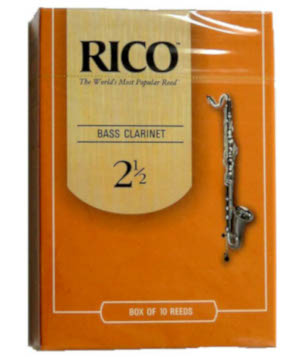
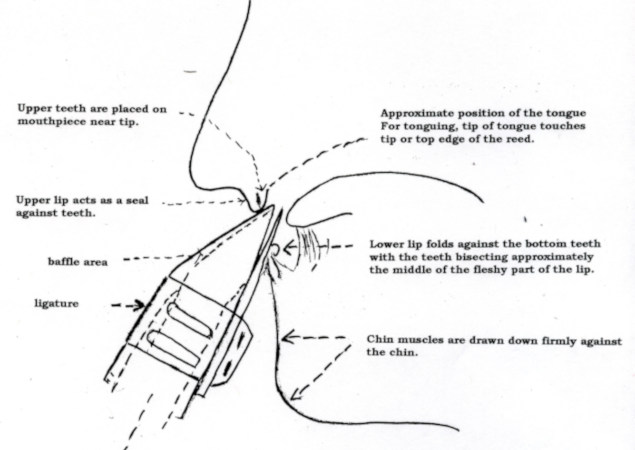
Hello! I am a new Bass Clarinet player and have a lower quality instrument to use while learning (I have an old, plastic Buescher). The instrument is in okay shape, but the bell is no longer fitting properly onto the body of the instrument. I am wondering if this is a common occurrence and how one can fix this. I have applied cork grease but the bell simply won’t fit past the cork. Any advice you have is appreciated.
Thanks! Jolie
Hi Jolie – thanks for your questions!
It’s not uncommon for older or lower-quality bass clarinets to have issues with the bell fitting properly onto the body of the instrument. There could be a few causes:
1. The cork may need to be replaced: Sometimes, the cork on the joint can become compressed or damaged, making it difficult to fit the bell properly. You may actually be using too much cork grease, which can cause the cork to swell.
2. There could be other foreign objects between the inside of the bell and the outside of cork. Make sure there’s no debris or obstruction there.
If neither of these issues are at fault, or you still can’t diagnose on your own, I’d suggest taking your instrument to be serviced by a professional. If it was a low quality instrument to begin with, as you said, if might be less expensive to just replace it.